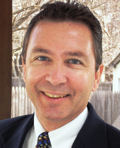 By Scott Kriner, Green Metal Consulting
By Scott Kriner, Green Metal Consulting
Greenbuild: Iconic took place in October at the Los Angeles Convention Center. The attendance was down a bit from previous Greenbuild conferences. The expo floor had fewer exhibitors and smaller exhibits compared to earlier events. Despite those observations it was clear that there remains a hunger for more information on green building issues. This is not a “movement” that attracts just millennials. Over 100 educational sessions were offered and the attendance at those sessions was very diverse with 100-200 attending most of them.
It is always interesting to get a handle on where the USGBC and LEED are going. It was clear to me that LEED is moving away from single attributes of products or materials and is shifting to holistic analysis of building design, construction and performance. Transparency remains a very important requirement in many of the credits. We are adding to Life Cycle Assessment of products and process and Environmental Product Declarations by adding transparency of ingredients in materials being used in a LEED building. The concept of Red Lists was still mentioned in the conference. However a new initiative to include industry to work closer with USGBC on the Materials Credits was announced. The American Chemistry Council and related coalitions have reached agreement with USGBC to change the approach to “hazardous” ingredients to now include “exposure” when determining which chemical ingredients can be permitted in a LEED building. Much of this change in the relationship toward industry is the fresh approach being taken by the new CEO of USGBC, Mahesh Ramanujam. He has pledged to keep dialogue open with all factions that have input on the LEED credit development.
Normally at an expo, one can get a sense of the “buzz” by evaluating the pavilions or hubs on the show floor. At Greenbuild: Iconic, there was emphasis on wood, red-list-free products, health and wellness, and Net zero energy and water. Many of the educational sessions supported those same overarching themes.
There was an obvious emphasis on indoor environmental issues. This covers design strategies to improve the productivity of occupants in a building. This is a holistic approach that includes natural lighting, thermal comfort, acoustics, air quality, and ventilation . In fact, one educational session on Biophillic Design (the art of connecting man to nature in the built community) was held outside to allow the attendees to experience the sounds, smells, and breeze that are rarely enjoyed inside a conventional building . According to presenters at Greenbuild, energy makes up only 1% of a typical building’s total operating costs, compared to the costs of employees, which includes productivity, absenteeism, health, etc., which makes up 90% of the building’s operating cost. Using that statistic is justifying the emphasis on Wellness in general. This topic will likely grow in popularity, especially since the outgoing USGBC CEO, Rick Fedrizzi, will be involved in the administration and promotion of the WELL Building Standard. Stay tuned.
The GBCI is also growing the number of new certification systems that they administer. These include PEER, and SITES. PEER is an outcome-driven rating process for evaluating power system performance. This is especially important in Resilient strategies in communities. The SITES program provides a toolkit for developing sustainable landscapes. This program has been adopted in many countries outside of the United States.
The USGBC and its LEED green building program has changed significantly since the first version of LEED was introduced in 2000. It continues to change as it sees shifting emphasis on issues related to buildings and the occupants. The stated goal of USGBC is to transform the building construction industry. Whether you agree or disagree with the tactics of USGBC it is clear that they have indeed transformed an industry. What was once considered an unnecessary “pie in the sky” concept is now baked into many building designs and is often considered business as usual.